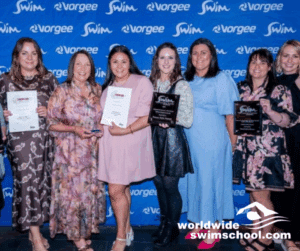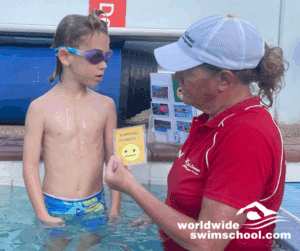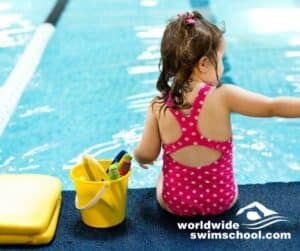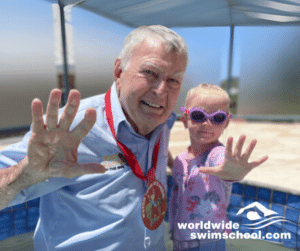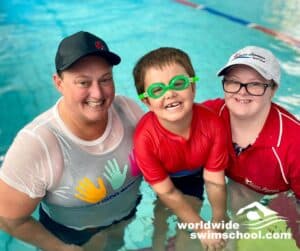How Language Shapes Participation, Confidence, and Belonging in Aquatic Programs
The language we use in aquatic environments plays a powerful role in shaping the experiences and perceptions of individuals with disability. At World Wide Swim School, we recognise that respectful, accurate, and inclusive language is essential to promoting a culture of dignity, empowerment, and safety for all participants.
In line with the principles of the United Nations Convention on the Rights of Persons with Disabilities (CRPD), we acknowledge that every individual has the right to participate fully and equally in activities—including aquatic programs—without discrimination. The way people with disability are spoken to, or spoken about, directly impacts their sense of belonging, confidence, and inclusion.
The Importance of Language in Aquatic Environments
Unfortunately, people with disability are often described using outdated or disempowering language—such as “sufferer” or “victim”—which can reinforce harmful stereotypes and portray disability as something inherently negative or pitiful. Such language is not only inaccurate; it also creates unnecessary barriers to participation in community-based settings, including swimming programs.
Instead, inclusive aquatic practice encourages either a person-first or identity-first approach, depending on individual preference. Both approaches support inclusive aquatic practices when used respectfully and appropriately.
Understanding Person-First Language
Person-first language is a respectful way of speaking that emphasises the individual before their disability, recognising their humanity rather than defining them by a condition. It reflects the belief that a person is not their disability, but rather a unique individual who may have a disability. This approach helps reduce stigma and promote dignity and inclusion.
In swimming lessons, person-first language helps create a positive learning environment. For example, instead of saying “the autistic child,” you would say “the child with autism.” This shifts the focus to the learner as a person first, allowing instructors to build rapport, adapt teaching strategies, and support the swimmer’s goals with empathy and professionalism.

Understanding Identity-First Language
Identity-first language places the disability before the person, reflecting the view that disability is an integral part of a person’s identity and should be recognised and respected as such. Many individuals within the disability and neurodivergent communities prefer this approach, as it affirms pride in their lived experience rather than viewing disability as something negative or separate from who they are.
In swimming lessons, using identity-first language can promote authenticity and alignment with the swimmer’s identity. For example, instead of saying “a child with autism,” you might say “an autistic child.” This approach acknowledges autism as a core aspect of how the child experiences the world and supports tailored, strengths-based teaching strategies in an inclusive aquatic setting.
Why Language Choice Matters in Swimming Lessons
Always prioritise the individual's preference regarding language. Each person will have their own perspective on how they wish to be identified. It is entirely appropriate—and considered respectful—to ask someone how they would like to be referred to. Seeking their preference demonstrates consideration, inclusivity, and a commitment to person-centred practice.
In aquatic settings, language also shapes the delivery of instruction. Clear, respectful, and inclusive communication increases learner trust, enhances safety, and supports effective skill acquisition—particularly for swimmers with communication or sensory processing differences.
Inclusive Language: A Professional Responsibility
Adopting inclusive language in the pool and beyond is not just about political correctness—it is a professional and ethical responsibility. It is foundational to:
At World Wide Swim School, we are committed to fostering inclusive aquatic practice and supporting swim instructors, educators, and programs in creating accessible, empowering, and respectful learning environments for all.
Learn more with our Online PD Learning Packs - take your pick. If you want all the content join our Swim PD Academy Online Platform.
Stay up to date with World Wide Swim School Offers - Articles Subscribe to newsletter it's FREE!
FAQs
A: Person-first language puts the person before the disability, e.g. "child with autism." It promotes respect and empathy in inclusive swim instruction.
A: Always ask the individual. Some prefer person-first, while others prefer identity-first as a point of pride and identity.
A: Language shapes confidence, trust, and a sense of belonging. Using respectful, inclusive language helps ensure all swimmers feel safe and supported.

